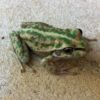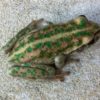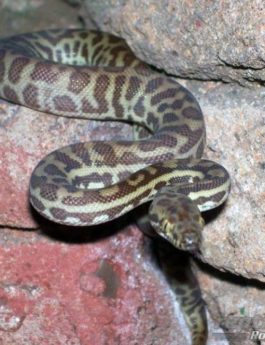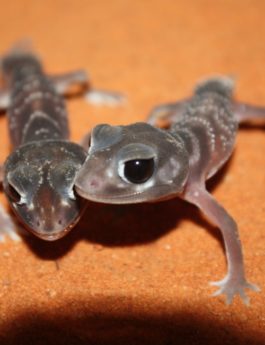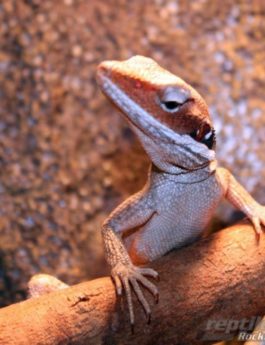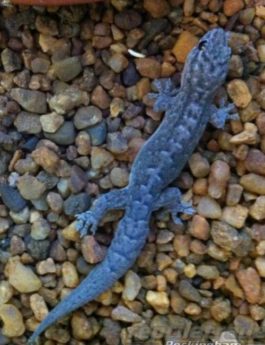Body small to large and slender to robust. Pupils horizontal. Vomerine teeth present or absent. Eardrums at least partly visible. Limbs short to long and fingers and toes with terminal discs, fingers webbed or unwebbed, toes webbed. Litoria moorei: SVL 64mm (male) 74mm (female) A large, robust green or brown frog with a triangle shaped head. Typically the ground colour is interspersed with clearly defined regular dark patches, that is pale brown with dark green or dark brown patches. There is a pale vertebrae stripe and a dark stripe from the eye passing through the ear to the flank, midway between the fore and hind limbs. This stripe may be extended forward from the eye to the nostril, and is often bordered above with white. Tympanum (eardrum) prominent. Back with a scattering of distinct tubercles. Fingers un-webbed, toes webbed. Call described as a long low growl broken into several parts, not unlike a motorbike changing gears.
Occurs in the southwest corner of Western Australia and are usually found among vegetaion, within or near permanent water, including swamps, rivers, garden ponds, and street drains. Also found in association with human habitation, frequently within toilet blocks and water tanks.
Terrarium: There are several terrariums of different sizes available, the required size will vary based on number of frogs you wish to house together. An enclosure that is 45x45x60 (WxDxH) will be suitable to house four frogs, having a bit of height to the enclosure will ensure that the water temperature does not get to high.
Lighting & Heating: Warm humid conditions are favourable for Western Green Tree Frogs. They require high spectrum UVB lighting as well as a basking heat source. There are a number of ways to provide UVB, fluorescent 10.0 spectrum tubes or bulbs will provide UVB, a heat globe will have to be used in conjunction. A mercury vapour globe will provide intense UVA & UVB light, mercury vapour globes are in our opinion superior to fluorescents as it is a longer lasting globe with more intense UVB output, however they cannot be used with a thermostat so work better with a larger enclosure that will easier maintain a thermal gradient. A nice warm basking spot around 35°c should be provided, and temperatures of 20-25°C in the cool end. To monitor the temperatures inside the enclosure a thermometer should always be used.
Furnishings: an elevated basking area can be provided using logs, vines or ornaments. Artificial foliage throughout the enclosure will allow plenty of hiding spots and coverage. A water conditioner must be used to remove any chlorines from the water.
Dry set up: artificial turf or a ‘Moss Mat’ can be used as substrate, a water bowl large enough for the frogs to fully submerge must be provided
Semi-aquatic set up: an aquarium gravel or larger stones can be used as a substrate, a submersible pump to keep the water moving and plenty of rocks or ornaments throughout the bottom of the enclosure so the frogs and easily get out of the water.
Food in captivity: Western Green Tree Frogs will eat mostly crickets, wood roaches and silk worms in captivity as they are primarily insectivores, large adults can have the occasional pinky mouse as a treat. Food items will need to be dusted with calcium and vitamin supplements.
The essentials:
- Terrarium of appropriate size
- High spectrum UVB lighting
- Daytime Basking globe
- Thermometer
- Substrate
- Branches/Vines/ornaments
- Foliage for shelter
- Calcium and vitamin supplements
- Water pump & hosing if semi-aquatic
- Water bowl if dry set up.


